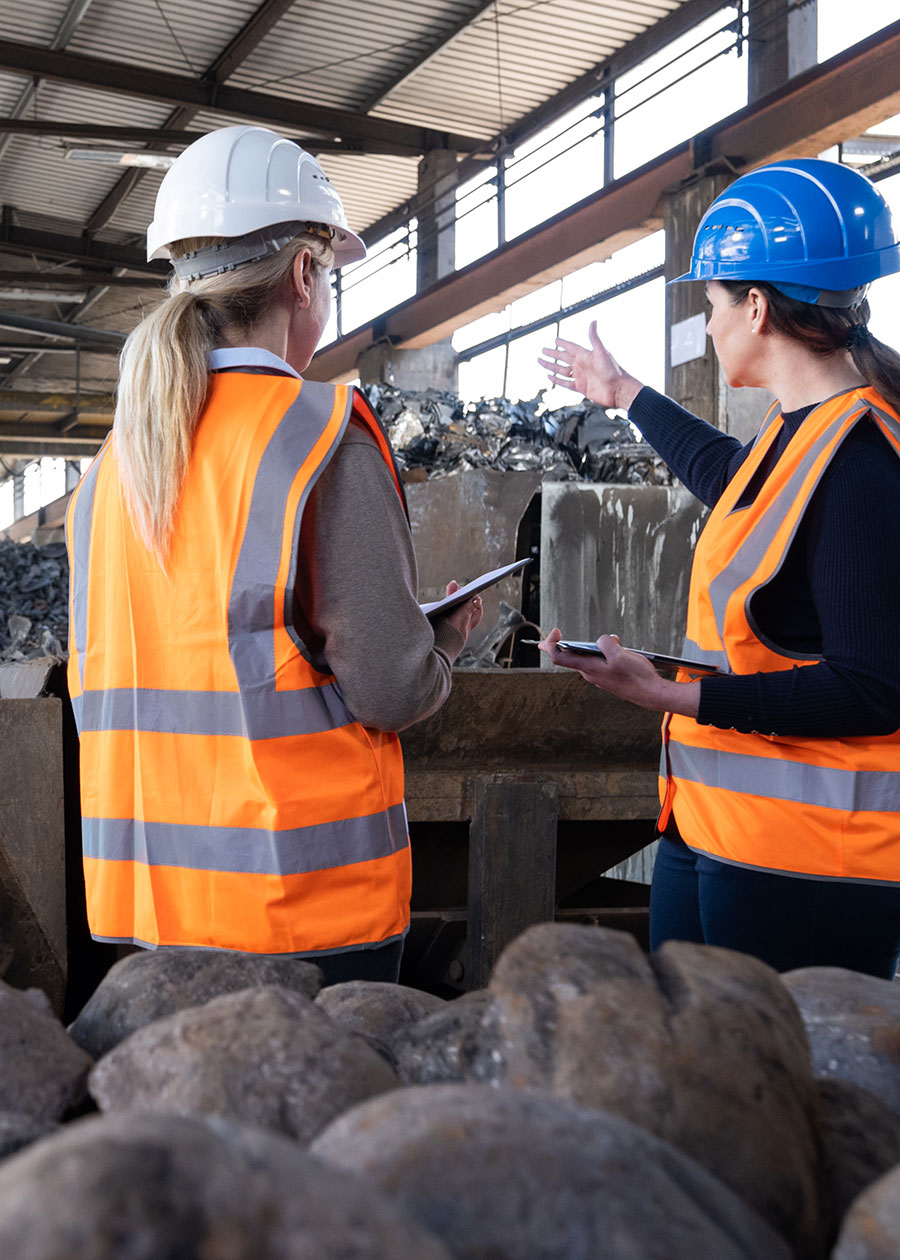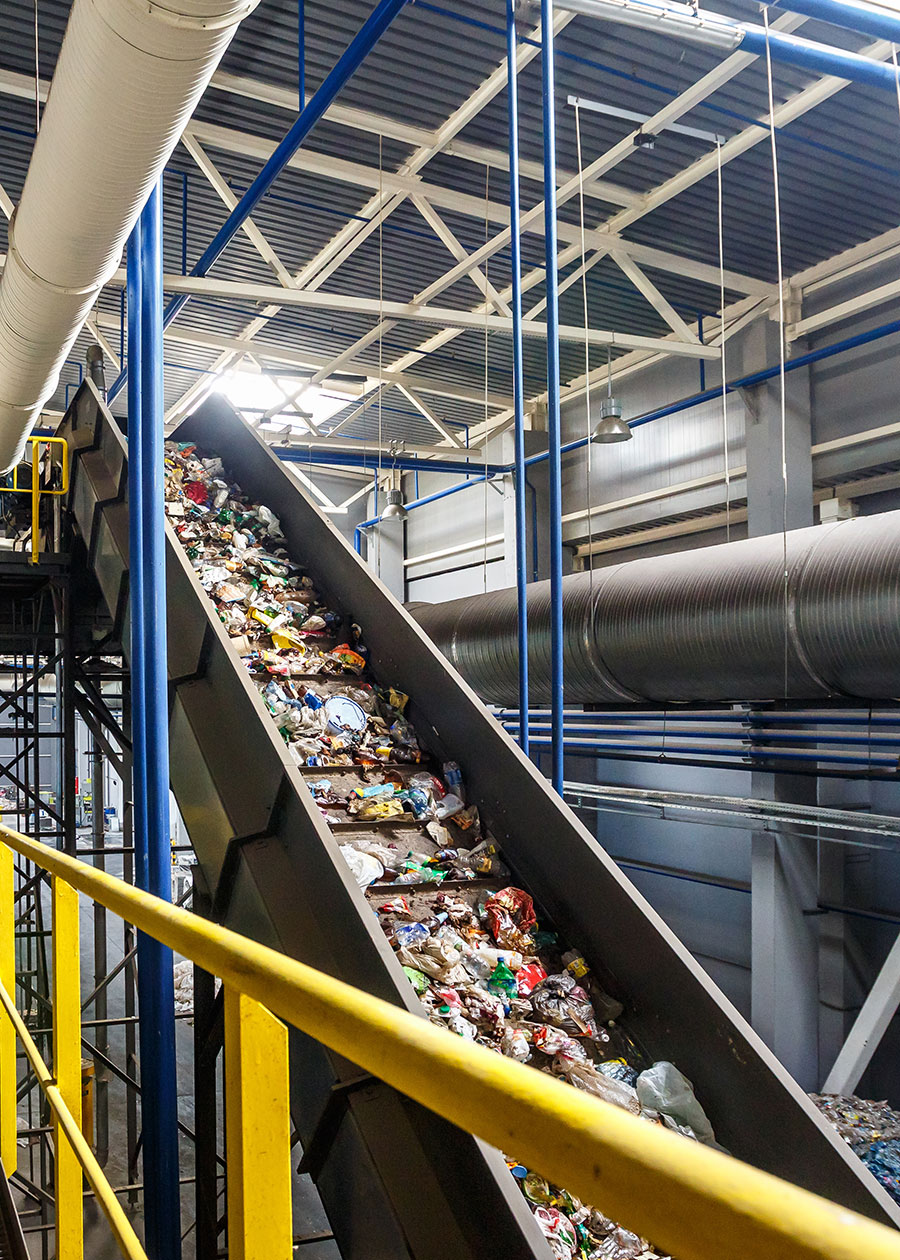Within each of the three strategies included in the Zero Waste Plan, there are specific recommended initiatives that include a mix of “upstream” activities that identify ways to keep materials out of the waste stream entirely and “downstream” activities that sustainably manage materials that are currently being disposed of at landfills.

STRATEGY 1
Programs and Services
Develop and expand responsive programs and services to provide for solid waste management needs while striving to reduce the amount of waste generated and disposed of at landfills. Initiatives within this strategy include:
INITIATIVES
- Develop, implement, and enforce policies for certain materials, such as bans, restrictions, or ordinances, (e.g., plastics, single-use items, and organic waste).
- Develop model purchasing guides/policies for schools, businesses, cities, and County/city facilities focusing on reducing toxics, packaging, and single-use items.
- Develop and implement policies for County convenings to be zero waste events.
- Establish stakeholder subcommittees to develop new approaches for source reduction by residents and businesses.
- Develop and circulate purchasing toolkits to promote residents to purchase only the food needed to prepare meals to reduce food waste.
- Develop and circulate toolkits to promote paperless office practices for office and telework work locations.
- Develop and circulate toolkits to residents to promote the reuse of household items instead of using single-use items (e.g., cloth towels vs. paper towels, reusable commuter mugs vs. paper cups and coffee sleeves).
- Develop and circulate toolkits to residents to promote the environmental benefits of donating clothes and other textiles that they no longer need and/or use.
- Support and develop reuse programs (e.g., redemption fees, repair cafes, material exchange, BYO).
- Support Extended Producer Responsibility (e.g., ordinances, legal requirements, incentives).
- Support voluntary or mandatory take-back initiatives for problematic products and packaging.
- Develop incentives for diverting waste to non-disposal alternatives.
- Develop “Tech Lab” incubators for reuse/recycle enterprise development.
- Evaluate alternative collection methods (e.g., collection frequency, size of bins, pay as you throw, true cost programs).
- Create a mechanism to monitor and enforce recycling.
- Increase recycling receptacles in public venues and business corridors with clear signage and messaging.
- Identify and partner with large food waste generators and work with local cities for food recovery and donation.
- Establish network of community gardens and facilities for composting food/yard waste, using resources, such as the Smart Gardening program.
- Develop organic waste collection and diversion programs in collaboration with waste haulers and other stakeholders while ensuring proper education of the public and businesses.
- Revise County’s C&D Recycling and Reuse Ordinance to incorporate green building standards and increase diversion requirements and make available to other jurisdictions for reference.
- Promote deconstruction and the use of salvaged materials via incentives and/or the development of a deconstruction services guide and support of Resource Recovery Centers.
- Provide incentives for using durable building materials/products with long lifespans and minimal maintenance requirements.
- Support historic preservation, “adaptive reuse” in building standards and the remodeling/repurposing of still functional buildings.
- Identify incentives to encourage the use of environmentally preferable items.
- Provide education on alternative products to eliminate or reduce HHW.
- Engage residents, community-based organizations, and stakeholders during the planning process for new permanent HHW and E-waste collection centers. (R/CW, CUCs)
- Establish reuse centers for reusable products dropped off at permanent centers to be made available to the public. (R/CW, CUCs)
- Increase number of permanent HHW and E-Waste collection centers and expand hours/days of operation for current centers. (R/CW, CUCs)
- Develop a standardized and consistent communication plan promoting the 4 R’s (Reduce, Reuse, Recycle, and Rethink) based on demographics, resources, and commercial and industrial businesses in targeted areas.
- Incorporate multiple languages (Arabic, Armenian, Chinese, Farsi, Korean, Spanish, Tagalog, Vietnamese, etc.) in educational and outreach efforts, as needed.
- Communicate waste reduction messages in a culturally sensitive manner to County residents, businesses, environmental organizations, and other stakeholder groups.
- Expand communication through social media.
- Form a Youth Advisory Board to get feedback directly from our younger stakeholders.
- Incorporate incentives, awards, contests, etc. to encourage all stakeholders to participate in sustainability programs.
- Educate businesses and government facilities on recycling programs that may help reduce their disposal costs and increase their recycling rate.
- Host planning workshops with waste haulers, businesses, multi-family complex owners, and other stakeholders for feedback and collaboration.
- Partner with town councils, homeowners’ associations, chambers of commerce, faith-based organizations, community-based organizations, conservation corps, local community colleges, etc. to get messaging out.
- Update the Unincorporated Area Mass Debris Management Plan to include a Private Property Debris Removal Addendum to maximize diversion of materials following emergencies and disasters.
We want to hear from you
To provide feedback on these initiatives, please leave a comment in the form below.

STRATEGY 2
Measuring Results
Establish standards and protocols to enhance the measurement of programs, services, facilities, equitable investments, and infrastructure. Focus on continuous improvement and encourage innovation to reduce, reuse, recycle, and rethink waste. Initiatives within this strategy include:
INITIATIVES
Waste Sector Assessment
- Conduct regular Waste Characterization Studies to determine which material types to target for diversion and share results with stakeholders.
- Develop an ordinance or similar mechanism to require solid waste facilities to report various information to local jurisdictions.
- Conduct surveys to determine program effectiveness and solicit feedback.
- Establish benchmarks tied to waste reduction goals – generation, disposal, recycling, and other diversion.
- Create a framework/template/tools to monitor and measure the success of new and existing source-reduction, recycling, and reuse programs.
- Analyze the lifecycle effects of non-recyclable, single-use materials (e.g., plastics and packaging) and recycled materials.
- Review program expenditures and revenues on a regular basis to ensure efficiencies and sustainable funding.
- Identify options for program funding adjustments that incentivize recycling/reusing and fund diversion programs.
- Evaluate the financial impact of scavenging on recycling programs and identify options to reduce scavenging.
- Explore grant funding and loans to augment program funding.
We want to hear from you
To provide feedback on these initiatives, please leave a comment in the form below.

STRATEGY 3
Facilities and Infrastructure
Identify the facility and infrastructure needs for each Focus Area. Encourage the development of state-of-the-art sustainable local waste management facilities and infrastructure in a fiscally, equitably, and environmentally responsible manner. Initiatives within this strategy include:
INITIATIVES
- Define clear permitting pathways and development standards for new or modified Sustainable Waste Management Facilities that minimize impacts and maximize benefits for the communities in which they are located. Such facilities recover or convert waste into renewable, negative-carbon fuels, electricity, and other useful products.
- Engage with community-based organizations throughout the development of a project and the permitting process to ensure adequate review and comment by the public.
- Seek and gain State level support and funding for sustainable waste management facilities.
- Require new facilities to provide community amenities such as education and recreation centers.
- Support or increase incentives for the end products of conversion technology facilities.
- Sponsor/support legislation to encourage the development of conversion technologies and the use of their end products.
- Develop guidelines for using recovered products from sustainable waste management facilities.
- Establish partnerships, including with community organizations, to develop educational pilot projects to demonstrate the benefits, feasibility, and safety of sustainable waste management technologies.
- Establish incentives to level the cost differential between sustainable waste management facilities and landfills and incentivize waste haulers to direct waste to such facilities.
- Sponsor/support legislation to fund the development of organic waste processing infrastructure and promote markets for their end products.
- Explore grant funding and loans to fund organic waste processing infrastructure.
- Encourage the development of organic waste diversion facilities, including biomass conversion, composting, and anaerobic digestion of organic materials.
- Explore public-private partnerships for infrastructure development that could be replicated by other jurisdictions to close the regional infrastructure gap.
- Engage residents, community-based organizations, and stakeholders during planning and before development of new organic waste diversion facilities.
- Develop and implement pilot organic waste management programs.
- Encourage opportunities for co-digestion of organic materials at wastewater treatment plants.
- Explore opportunities to develop micro-composters or digesters at large community venues/facilities.
- Promote and incentivize the use of locally generated reusables and recycled materials.
- Support minimum recycled content policies.
- Promote the use of products from processing organic waste (e.g., fuels, compost, mulch, fertilizer).
- Support product certification standards and statewide definitions for recyclability and compostability along with proper labeling requirements.
- Expand the RMDZ to include additional interested cities in Los Angeles County.
- Seek out and promote grant funding for green businesses.
- Seek and encourage new green businesses and remanufacturing facilities to locate in Los Angeles County.
- Create a toolkit to circulate through local Chamber of Commerce chapters and other business organizations to promote the RMDZ program to businesses and entrepreneurs to encourage equitable community-based waste reduction operations.
- Facilitate the development of Resource Recovery Centers at sustainable waste management facilities, transfer stations and landfills in the County to promote waste reduction in a convenient manner.
- Coordinate with State Agencies to address conflicting regulations.
- Identify opportunities to achieve shared goals (such as using biogas to reduce GHG emissions and creating a market for organic waste products while supporting electrification).
We want to hear from you
To provide feedback on these initiatives, please leave a comment in the form below.
We want to hear from you.
Send us your comments and feedback about the Initiatives listed on this page.

